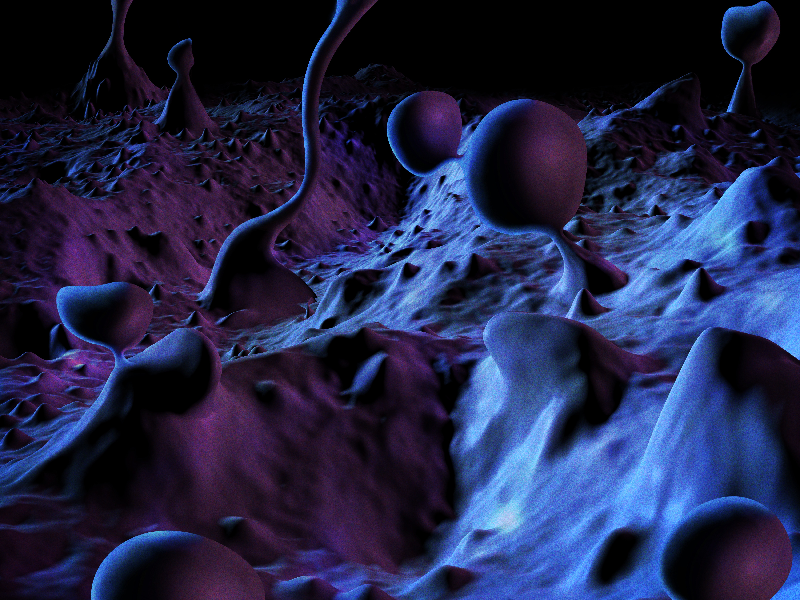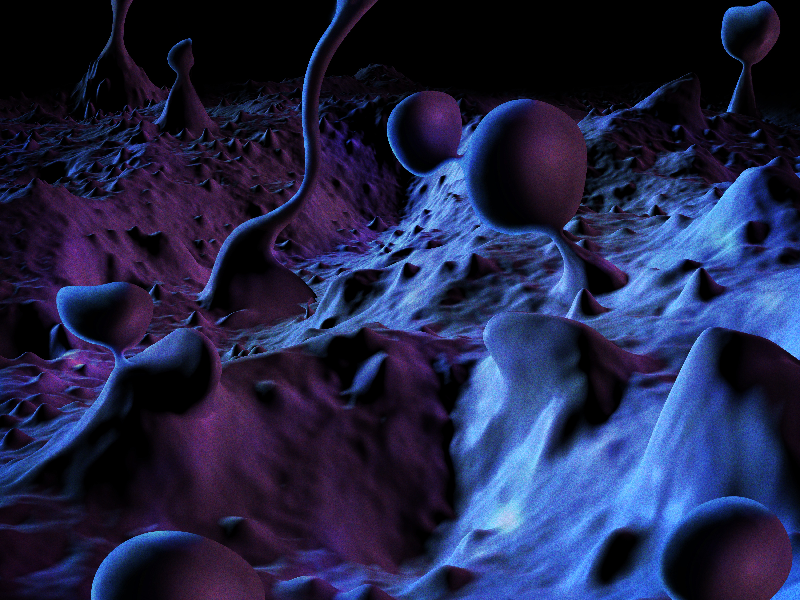“Quantum Foam” Scrubs Away Gigantic Cosmic Energy
Many theoretical approaches that work toward a quantum theory of gravity suggest that all of spacetime should be filled with an energy that is as much as 10120 times larger than observations allow. Theorists have proposed various tweaks to make this energy go away, but a new proposal hints at a different type of solution: the energy really is huge, but it has no large-scale significance for cosmic expansion because its effects cancel out on the very smallest scales.
In 1955, the pioneering relativity theorist John Wheeler of Princeton University, New Jersey, argued that on the very smallest scales, the ability to define length, time, and energy would become subject to the uncertainty principle [1]. The continuous space and time of classical physics would be transformed into a randomly fluctuating state that Wheeler called “spacetime foam.” The foam would exist on the so-called Planck scale, the regime where lengths are 10−35 meters, times are 10−44 seconds, and energies are 1019 GeV. These scales are characteristic of the initial moments of the big bang.
Advances in quantum field theory have made it possible to analyze spacetime foam with a greater degree of mathematical rigor than was possible in Wheeler’s time. Modern analyses suggest that a vacuum pervaded by spacetime foam might possess an enormous intrinsic energy. Such an energy would act like the cosmological constant, a fixed parameter that can be added to the equations of general relativity. The cosmological constant also has the same effect as the “dark energy” that has been posited to explain why the Universe’s expansion is accelerating [2]. Despite its obvious effects, however, dark energy is perhaps 10120 times smaller than the predicted Planck-scale vacuum energy, a discrepancy that theorists have struggled to explain.
Some physicists have sought theoretical mechanisms that would make Planck-scale vacuum energy go away. For example, it could disappear because of a perfect cancellation of positive and negative contributions or by suppression arising from quantum field behavior in curved space.
But Steven Carlip of the University of California, Davis, offers a different proposal. He notes that the equations of general relativity for spacetime with a cosmological constant have solutions that either expand or contract exponentially with time. He then imagines a foam-like spacetime in which the vacuum energy is enormous everywhere but in which individual Planck-sized regions either expand or contract with equal likelihood. Making use of a recent mathematical procedure that allows the Planck-scale regions to be “glued” together in a way that is consistent with general relativity, he comes to a remarkable conclusion: even though the vacuum energy is huge everywhere, the juxtaposition of expanding and contracting regions creates a patchwork that is essentially indistinguishable from a large-scale spacetime that is neither expanding nor contracting. Such a spacetime can be described macroscopically as having zero cosmological constant. The only major assumption needed for the gluing procedure to work is that the spacetime foam has no intrinsic direction of time.
Carlip then addresses how this spacetime might evolve. This is a hard problem, for two reasons. At the borders between the different regions, spacetime curvature changes strongly over small distances, making its evolution in time hard to calculate. And because the regions are Planck-scale, quantum gravitational effects—for which there is no complete theory—cannot be ignored. Nevertheless, Carlip presents some arguments indicating that a three-dimensional slice through this spacetime will continue to behave like one with no vacuum energy. One way to envisage the process is that as the expanding regions grow, spacetime foam constantly bubbles up at the Planck scale, so that the interiors of the regions fill with a mix of expanding and contracting pieces.
Thomas Buchert, a mathematical relativist at the University of Lyon, France, says that although it is fairly schematic, Carlip’s proposal is plausible, assuming that a cosmological constant indeed arises from quantum fluctuations. But Buchert adds that he is not fully convinced by the averaging procedure Carlip uses and suggests that the initial state in the model might evolve into a spacetime with an effective cosmological constant that varies on large scales, rather than canceling out.
Carlip acknowledges that his proposal requires further development to become the foundation for a rigorous cosmological model and that it does not address the origin of dark energy. His point, though, is that when it comes to solving the problem of a huge cosmological constant, “we may have simply been looking in the wrong place.”
This research is published in Physical Review Letters.
–David Lindley
David Lindley is a freelance science writer, now retired. His most recent book is The Dream Universe: How Fundamental Physics Lost Its Way (Penguin Random House, 2020).
References
- J. A. Wheeler, “Geons,” Phys. Rev. 97, 511 (1955).
- P. Brax, “What makes the Universe accelerate? A review on what dark energy could be and how to test it,” Rep. Prog. Phys. 81, 016902 (2017).





